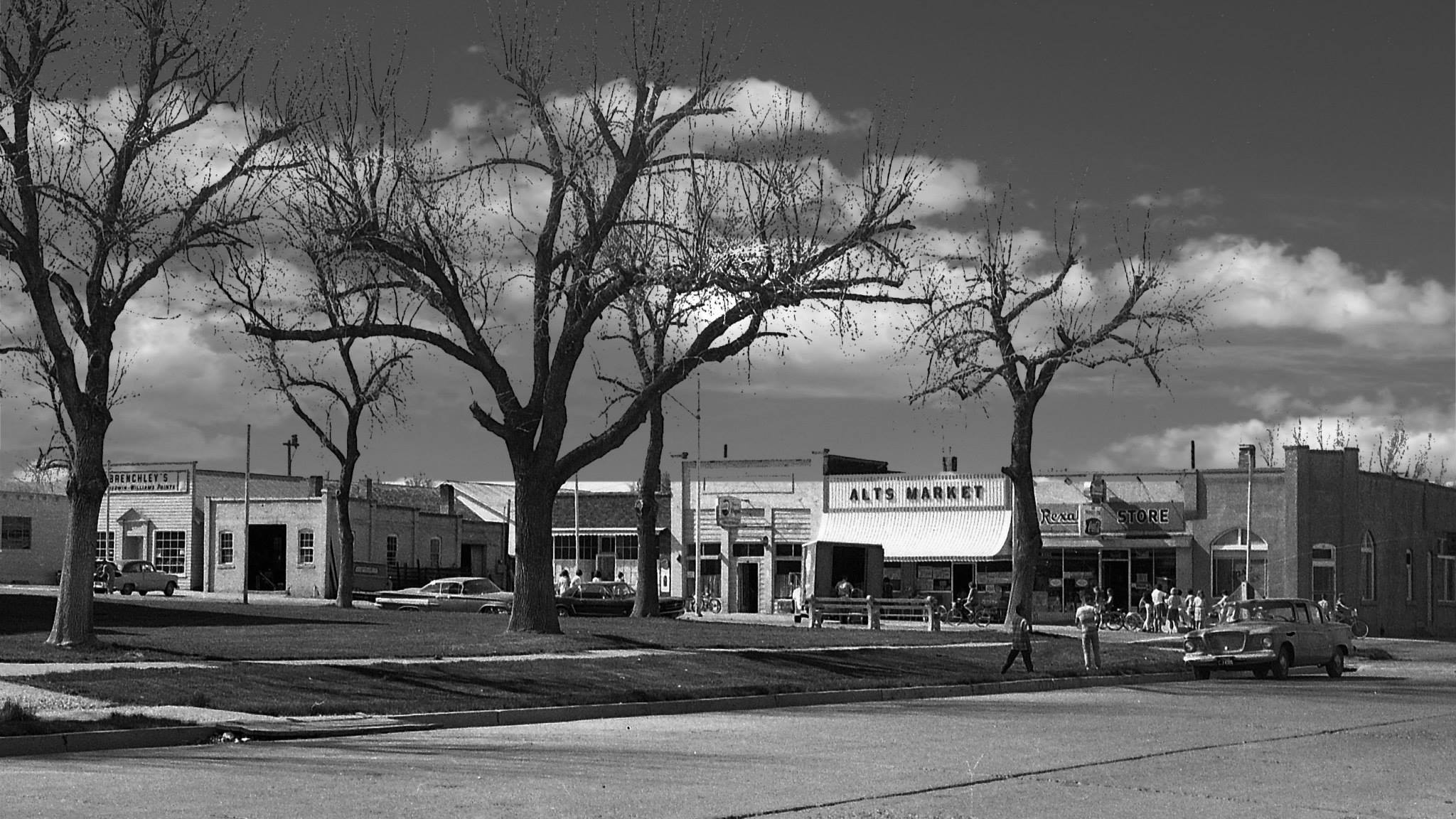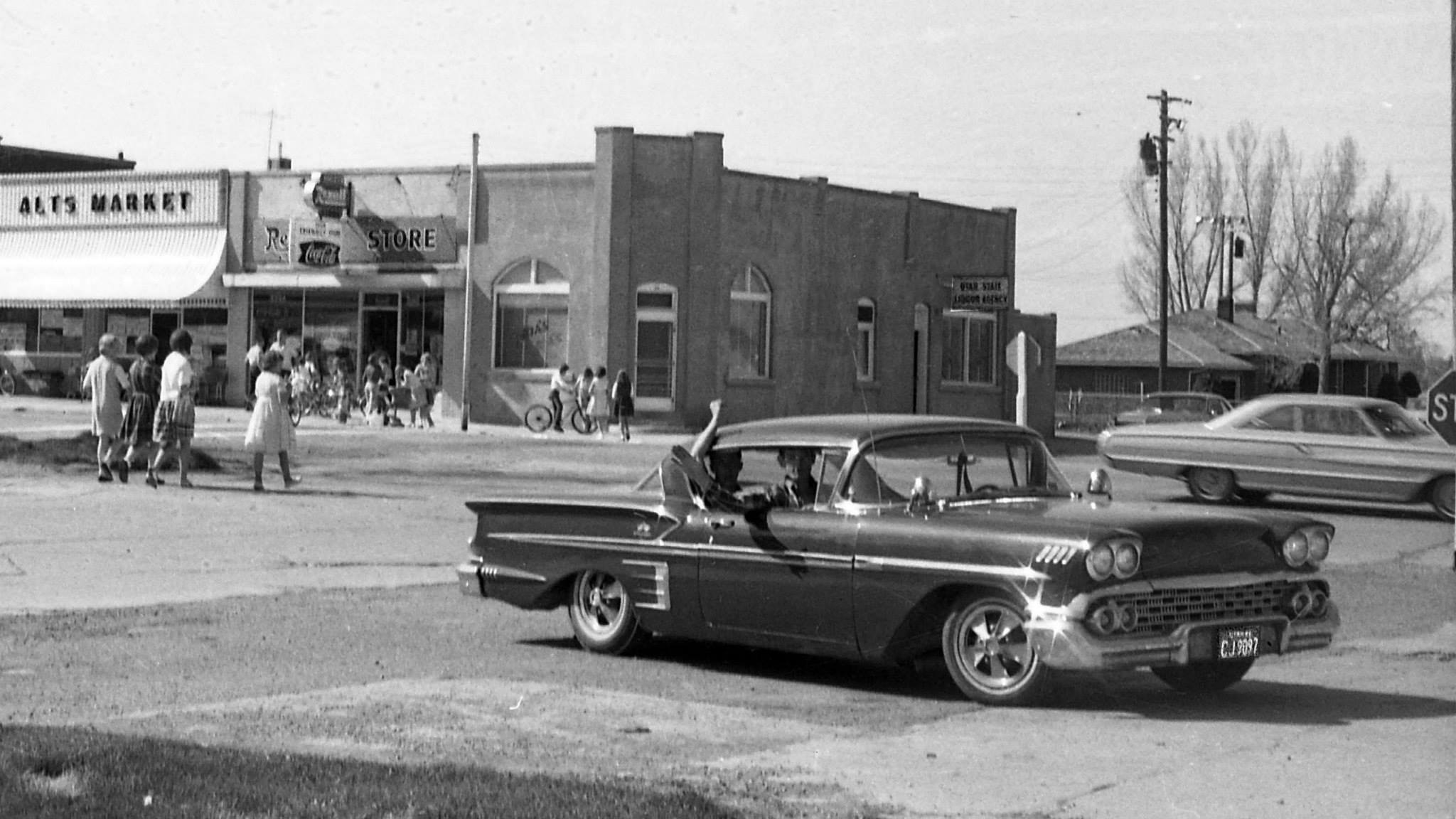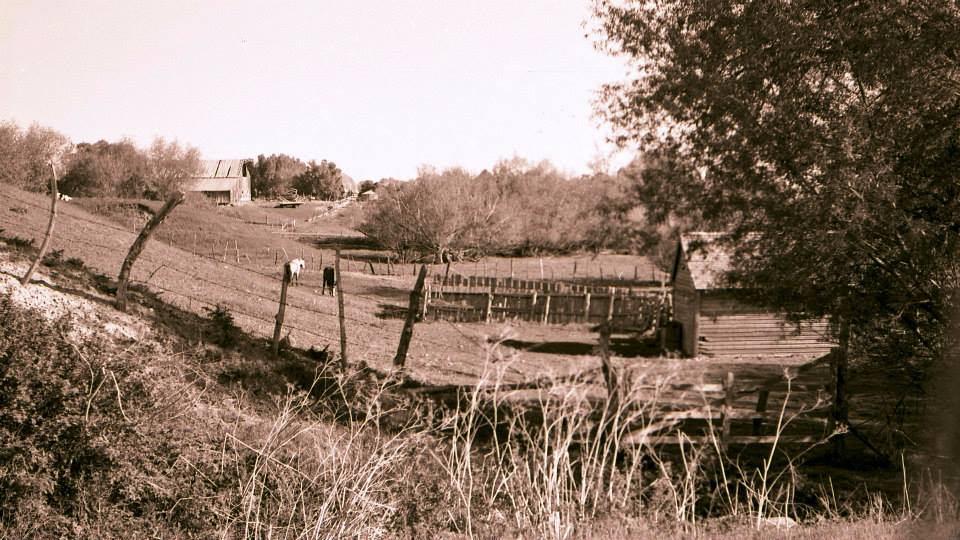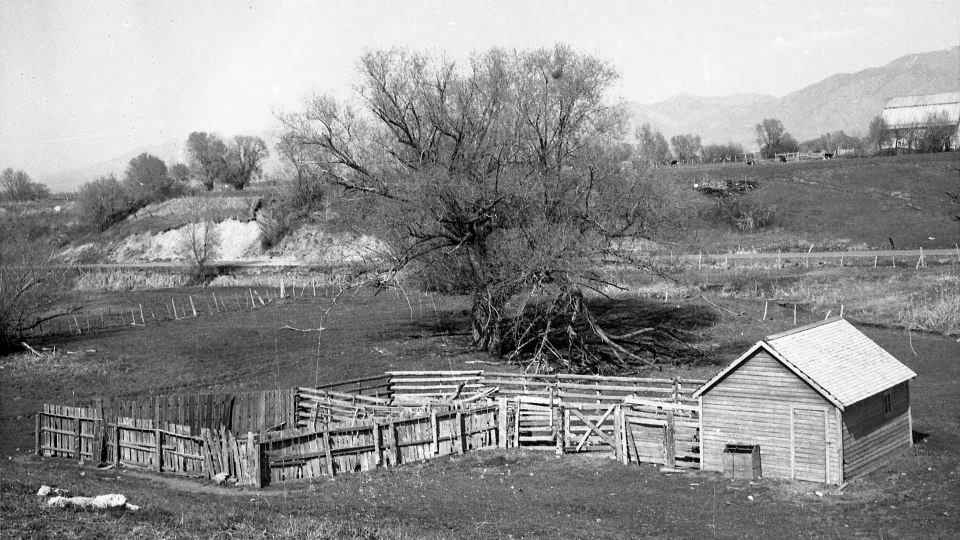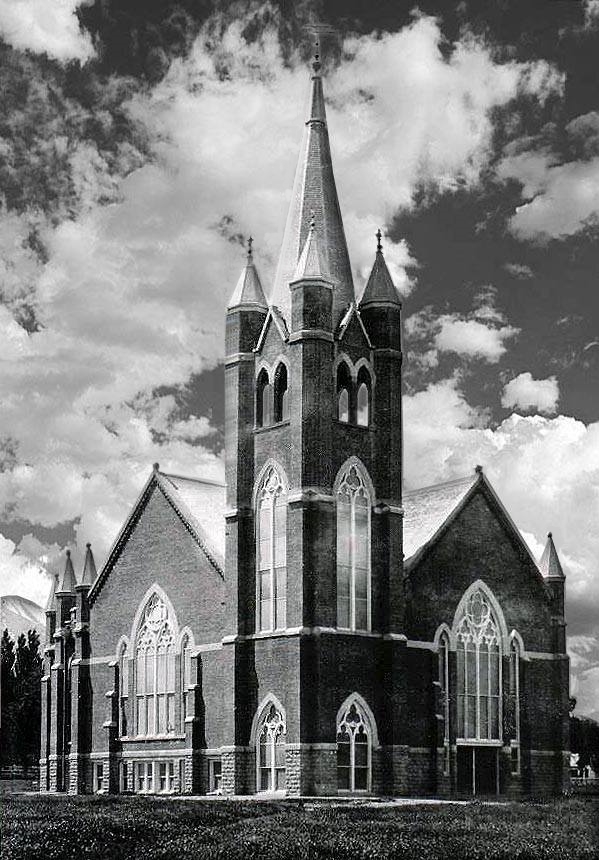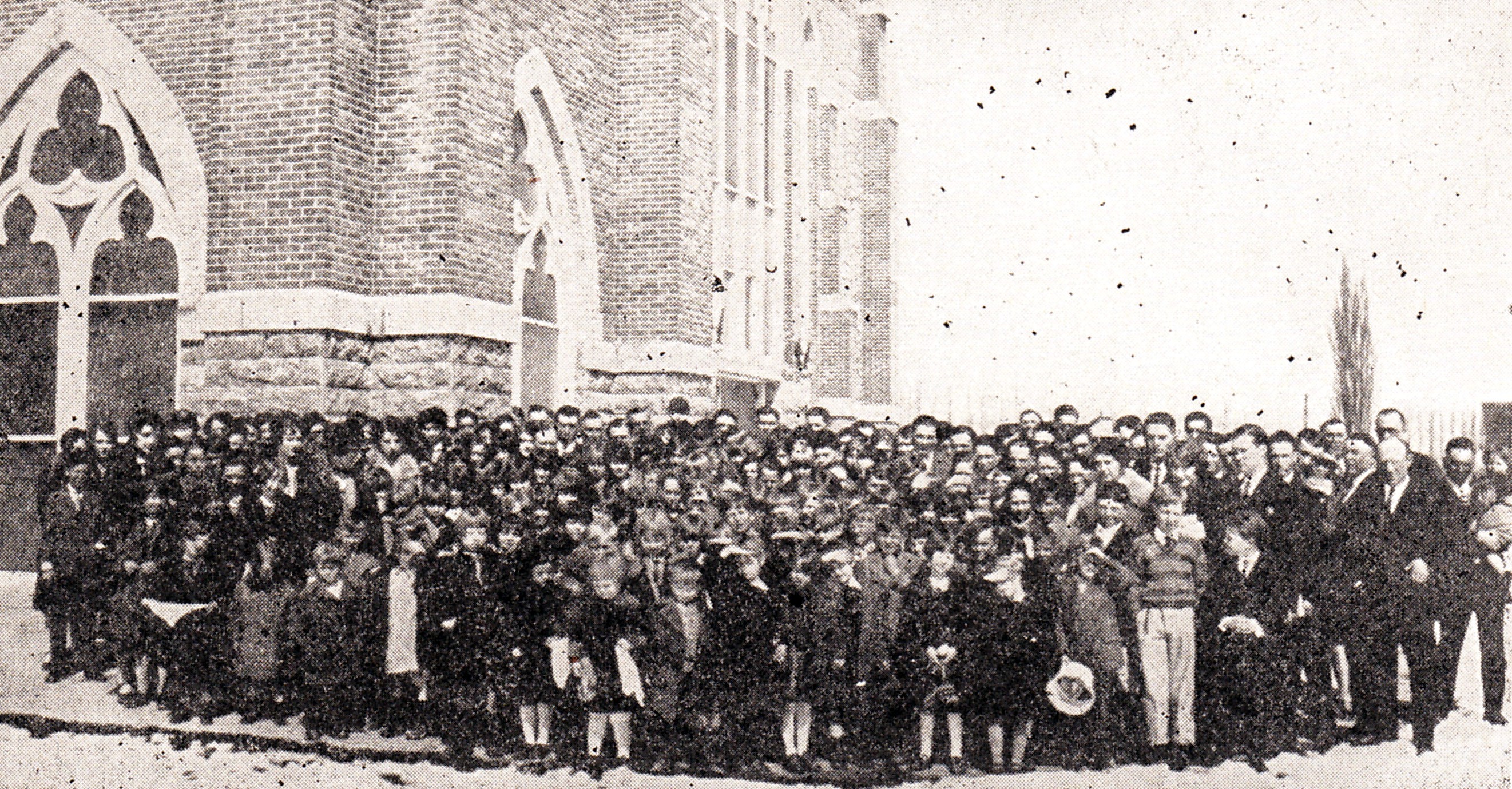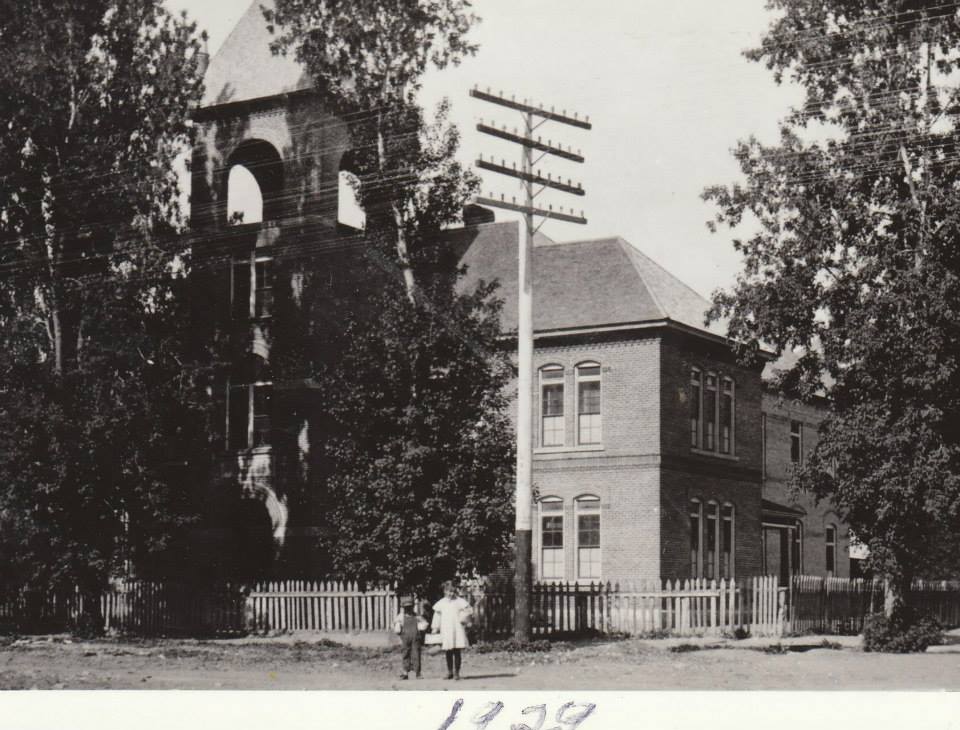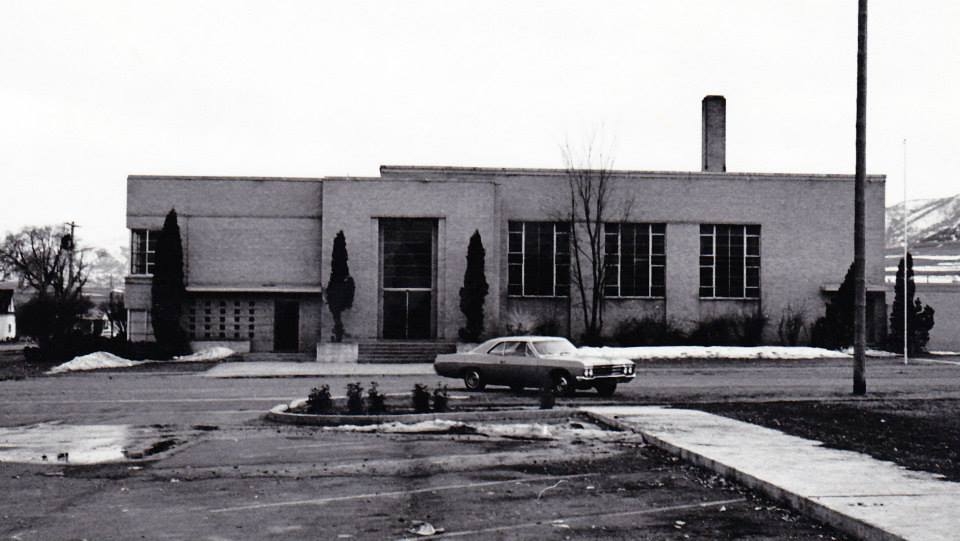Historical Images
This is a small collection of historical images in the vast collection of Wellsville City. Please enjoy the local history!
If you have old photographs or other items about Wellsville from “the olden days” and you no longer have a use for them, please consider donating them to the Wellsville Historical Commission. Even if your photographs contain pictures of unidentified people, we would still enjoy having them. They will be preserved for future generations. If you wish to make a donation of this type or would like more information, please contact a member of the Wellsville Historical Commission.
Tour of 1863
In 1986, in conjunction with the annual Founders’ Day celebration,the Wellsville Historic Presevation Commission put together a historical tour of Wellsville as it existed in 1863. A bus tour took interested citizens and vistors on a fascinating trip around Wellsville. Members of the Commission pointed out various points of interest and highlights of Wellsville’s history.
A brochure was given to participants showing the different historical locations. Now you can print a copy of the brochure and take your own personal tour. The plot map is from a survey taken on October 28, 1863, when Wellsville was just 7 years old.
Thanks go to LaRayne B. Christensen, Wilma Hall, Ruth H. Maughan, Anne Bell, and Jay L Nielson.
History of Wellsville
Nestled at the base of the Wellsville Mountain, a topographic curiosity because of its narrow base and unusual height, lies Wellsville – Cache County’s oldest permanent settlement. It occupies the southwest corner of Cache Valley.
On 15 September 1856, the families of Peter, John, and William H. Maughan, Zial Riggs, and Francis W. Gunnell, and two single men, George W. Bryan and O.D. Thompson, entered Cache Valley There were twenty-five in the group, the oldest being forty-five and the youngest six weeks. They drove to a stream where they made their encampment; they called their settlement Maughan’s Fort. Wagon boxes were taken off, and the women prepared homes in them. The men explored the valley and began to cut and stack the meadow hay for their livestock.
Eleven days after their arrival, snow blanketed the ground to the depth of a man’s ankle. During this storm, Mary Ann Weston Maughan gave birth to a baby daughter, Elizabeth, the first white child born to permanent settlers in Cache Valley. An abundance of water coupled with its favorable location helped the settlement flourish. There was soon a grist mill, saw mill, brickyard, dairies, co-op, tannery, granaries, ice house, slaughter house, and lush crops growing in the fertile soil.
Settlers continued to come to Maughan’s Fort after the evacuation caused by the threat of Johnston’s Army. Those who stayed at the fort were mostly of English, Scottish, or Welch* descent with a few Irish among them. Someone could be found skilled at almost any vocation needed. Apostles Orson Hyde and Ezra T. Benson visited the Fort on 13 November 1859 to appoint William H. Maughan as bishop of the Wellsville Ward, a position he held for over forty years. At this time they changed the town’s name from Maughan’s Fort to Wellsville in honor of Daniel H. Wells, second counselor to President Brigham Young.
Peter Maughan was selected by the legislature on 8 January 1857 as the first probate judge of Cache County, having jurisdiction over estates, guardianship, divorce cases, and authority to enter lands in trust; however, he had no authority in criminal cases. Judge Maughan organized Cache County and chose to fix the site of the county seat at Maughan’s Fort (Wellsville) where all business was conducted until 5 March 1860, at which time the county seat was moved to Logan. At that time the census showed Wellsville with 574 people and Logan with 533.
In 1857 Wellsville became School District No. 8, and a combination school and church building was erected with Francis W. Gunnell the first teacher. In 1881 a Presbyterian day school was opened and functioned until 1907 in an exceedingly strong Mormon town. Through the years, local schools have included elementary and junior high levels, and a Wellsville High School was in existence until 1915. At the present time, junior and senior high students are transported to other communities.
Wellsville was surveyed in 1863 by James H. Martineau, who put into effect what was a Mormon community concept: four-square orientation with the points of the compass with the streets meeting at right angles. The land was divided into ten-acre blocks, each divided into eight lots of 1.25 acres. As bishop, William H. Maughan had de facto powers in civil affairs. As early as 1861 a justice of the peace, marshal, road supervisor, and town clerk were serving; but it was not until 19 January 1866 that Wellsville was incorporated as a city with a full slate of municipal officers with William H. Maughan as mayor.
This predominantly Mormon community built a beautiful Gothic Revival-style tabernacle between 1902 and 1908. It was built by volunteer labor with local building materials and has stood in the town square as a sentinel and been the center of activity for both church and community for over one hundred years. There are now nine LDS Wards housed in three buildings, and the Wellsville Stake was organized 17 June 1979. There has been an organized choir since early settlement, and each ward still supports a choir that provides music for meetings, special programs, funerals and Founders’ Day.
The business district is now smaller than it was several decades ago, but we still support a convenience store, gas stations, a post office, dentist office, several beauty shops, an art studio, photography studio, and other businesses. In addition Wellsville currently licenses approximately 120 ‘home occupations’ that provide a wide variety of services.
We are very proud of our Fire Department and First Responders, who are exceptionally well trained and dedicated. They have up-to-date emergency equipment and are capable of responding to a wide variety of emergency situations.
Music and sports for adults and children are all heavily supported and enjoyed. The city maintains three baseball/softball diamonds, and has a thriving youth soccor program. Wellsville also boasts an excellent rodeo arena that is used by horsemen throughout the valley and surrounding areas. A picnic bowery and playground on the city square and at the Wellsville Dam are available for parties and reunions. A walking path and new soccer fields will soon be completed at the Wellsville Dam for the enjoyment of our citizens.
Wellsville continues to grow and currently has over 3000 citizens. Although there are still a few farmers and dairymen left in town, most of our residents are employed outside of the community. They return each night, proud and happy to be back in Wellsville, our little town nestled against the mountains and home to many great families and friends.
LaRayne B. Christensen, Wilma J. Hall, Ruth H. Maughan, Leesa Cooper

